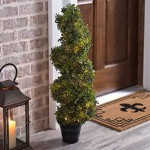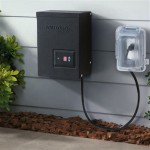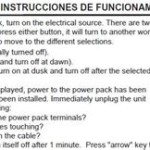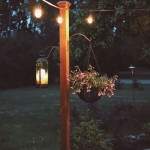Illuminating Spaces: A Comprehensive Guide to Indoor and Outdoor String Lights
String lights, also known as fairy lights, bistro lights, or festoon lights, have evolved from simple holiday decorations to versatile lighting solutions for both indoor and outdoor environments. Their adaptability and aesthetic appeal make them a popular choice for creating ambiance, enhancing architectural features, and providing supplemental illumination. Understanding the various types, functionalities, and installation techniques associated with string lights is essential for maximizing their potential and ensuring safe and effective usage.
The selection of appropriate string lights requires careful consideration of several factors, including the intended application, safety standards, and desired aesthetic. This article provides a detailed overview of string lights, encompassing their diverse types, key features, installation considerations, and maintenance practices.
Types of String Lights
The market offers a wide array of string lights, each designed to meet specific needs and preferences. Categorizing string lights based on bulb type, power source, and design characteristics facilitates informed decision-making during the selection process.
Bulb Type: The type of bulb used in string lights significantly impacts their energy consumption, light output, and overall durability. Common bulb types include incandescent, LED, and solar-powered.
Incandescent Bulbs: Incandescent string lights were traditionally the most common type. They produce warm, inviting light but are significantly less energy-efficient than LED alternatives. Incandescent bulbs also have a shorter lifespan and are more susceptible to breakage. Their heat output can also be a safety concern in certain applications, particularly when used near flammable materials.
LED Bulbs: Light-Emitting Diode (LED) string lights have become increasingly popular due to their enhanced energy efficiency, extended lifespan, and reduced heat generation. LED bulbs consume significantly less power than incandescent bulbs, resulting in lower electricity bills and a reduced environmental impact. They are also available in a wide range of colors and color temperatures, offering greater flexibility in creating desired lighting effects. The durability of LED bulbs contributes to reduced replacement frequency and long-term cost savings.
Solar-Powered Bulbs: Solar-powered string lights offer a sustainable and convenient lighting solution for outdoor spaces. These lights utilize photovoltaic cells to convert sunlight into electricity, eliminating the need for external power sources and reducing energy consumption. Solar-powered string lights are ideal for areas where access to electrical outlets is limited or where minimizing environmental impact is a primary concern. However, their performance is dependent on sunlight availability, and their light output may be less intense than that of electrically powered options.
Power Source: String lights can be powered by various sources, including electrical outlets, batteries, and solar energy. The choice of power source depends on the intended application, availability of power outlets, and desired level of portability.
Plug-In String Lights: Plug-in string lights are powered by standard electrical outlets. They are suitable for both indoor and outdoor use, providing a reliable and consistent source of illumination. However, their range is limited by the length of the power cord and the proximity of electrical outlets. When used outdoors, it is crucial to ensure that the lights are specifically designed for outdoor use and are properly grounded and weather-resistant.
Battery-Powered String Lights: Battery-powered string lights offer greater flexibility and portability compared to plug-in options. They are ideal for decorating areas where electrical outlets are not readily available, such as centerpieces, wreaths, or temporary displays. The lifespan of battery-powered string lights depends on the type of batteries used and the power consumption of the bulbs. Rechargeable batteries can reduce waste and long-term operating costs.
Solar-Powered String Lights: As previously mentioned, solar-powered string lights utilize sunlight as their primary energy source. A solar panel charges a rechargeable battery during the day, which then powers the lights at night. These lights are self-sufficient and require minimal maintenance, making them a convenient and eco-friendly lighting solution for outdoor environments.
Design Characteristics: String lights are available in a multitude of designs, ranging from simple strands of miniature lights to elaborate decorative arrangements. Some common design characteristics include:
Bulb Shape and Size: String lights feature bulbs in various shapes and sizes, including globe, C7, G40, and fairy lights. The choice of bulb shape and size impacts the overall aesthetic and light distribution. Larger bulbs, such as globe lights, provide a brighter and more diffused light, while smaller fairy lights create a subtle and delicate ambiance.
Spacing Between Bulbs: The spacing between bulbs influences the density and intensity of the light. Closer spacing creates a more concentrated light effect, while wider spacing results in a more dispersed and subtle glow.
Wire Color and Material: The wire color and material can complement or contrast with the surrounding décor. Common wire colors include green, white, black, and clear. The wire material should be durable and weather-resistant for outdoor applications.
Light Color: String lights are available in a wide range of colors, including warm white, cool white, multi-color, and various shades of red, green, blue, and yellow. The choice of light color should complement the overall décor and create the desired ambiance.
Key Features and Considerations
Beyond the basic classification of string lights, several key features and considerations influence their suitability for specific applications. These include weather resistance, dimmer compatibility, connectability, and safety certifications.
Weather Resistance: For outdoor applications, weather resistance is a critical consideration. String lights designed for outdoor use are typically constructed with waterproof or water-resistant materials and are sealed to protect against moisture, dust, and other environmental elements. Look for an IP rating (Ingress Protection) to determine the level of protection against solids and liquids. A higher IP rating indicates greater protection. Common ratings for outdoor string lights include IP44, IP65, and IP67.
Dimmer Compatibility: Some string lights are compatible with dimmers, allowing for adjustable light intensity. Dimmer compatibility provides greater control over the ambiance and energy consumption. Ensure that the dimmer is specifically designed for use with the type of bulbs used in the string lights (e.g., LED dimmers for LED string lights).
Connectability: The ability to connect multiple strands of string lights end-to-end can simplify installation and extend the lighting coverage. However, it is important to adhere to the manufacturer's specifications regarding the maximum number of strands that can be connected safely. Overloading the circuit can pose a fire hazard.
Safety Certifications: Look for string lights that have been certified by reputable safety organizations, such as UL (Underwriters Laboratories) or ETL (Electrical Testing Laboratories). These certifications indicate that the lights have been tested and meet established safety standards. Use of certified products reduces the risk of electrical shock or fire.
Installation and Maintenance
Proper installation and maintenance are essential for ensuring the safety, longevity, and optimal performance of string lights.
Installation: The installation process varies depending on the type of string lights and the intended application. However, some general guidelines apply:
Planning the Layout: Before installing string lights, carefully plan the layout to ensure that the lights are evenly distributed and create the desired effect. Consider the placement of power outlets or solar panels, and ensure that the lights are within reach of these power sources.
Secure Attachment: Securely attach the string lights to supporting structures using appropriate hardware, such as hooks, clips, or zip ties. Avoid using nails or staples, as these can damage the wires and create a safety hazard. Ensure that the lights are not hanging too low, which could pose a tripping hazard.
Weatherproofing: For outdoor installations, ensure that all connections are properly weatherproofed to prevent moisture from entering the electrical components. Use weatherproof connectors or electrical tape to seal any exposed wires or connections.
Connecting Multiple Strands: If connecting multiple strands of string lights, follow the manufacturer's instructions regarding the maximum number of strands that can be connected safely. Avoid overloading the circuit, which can pose a fire hazard.
Maintenance: Regular maintenance can extend the lifespan of string lights and ensure that they continue to function properly.
Cleaning: Periodically clean the string lights to remove dust, dirt, and debris. Use a soft cloth or brush to gently wipe down the bulbs and wires.
Inspecting for Damage: Regularly inspect the string lights for any signs of damage, such as frayed wires, cracked bulbs, or loose connections. Replace any damaged components immediately to prevent electrical hazards.
Storage: When not in use, store the string lights in a dry and protected location to prevent damage from moisture or extreme temperatures. Coil the lights neatly and secure them with zip ties or velcro straps to prevent tangling.

How To Hang Patio Lights

28 Backyard Lighting Ideas How To Hang Outdoor String Lights

How To Choose The Best Outdoor String Lights

Enbrighten 24 Bulbs 48 Ft Outdoor Indoor Bistro Led String Lights 38357 The Home Depot

How To Hang Outdoor String Lights A Step By Guide Govee

Outdoor String Light Ideas

100 Foot Outdoor Patio String Lights G40 Clear Globe Bulbs Green Wire For Backyard Deck Gazebo Porch Garden And Yard Lighting Com

Gold Bistro Indoor Outdoor Led 25 Bulb String Lights World Market

21 Best Outdoor Lighting Ideas Easy Patio

Newhouse Lighting Indoor Outdoor 50 Ft Plug In Globe Bulbs Party Led String Lights With 55 G40 Included 5 Free Pstringled50 The Home Depot







